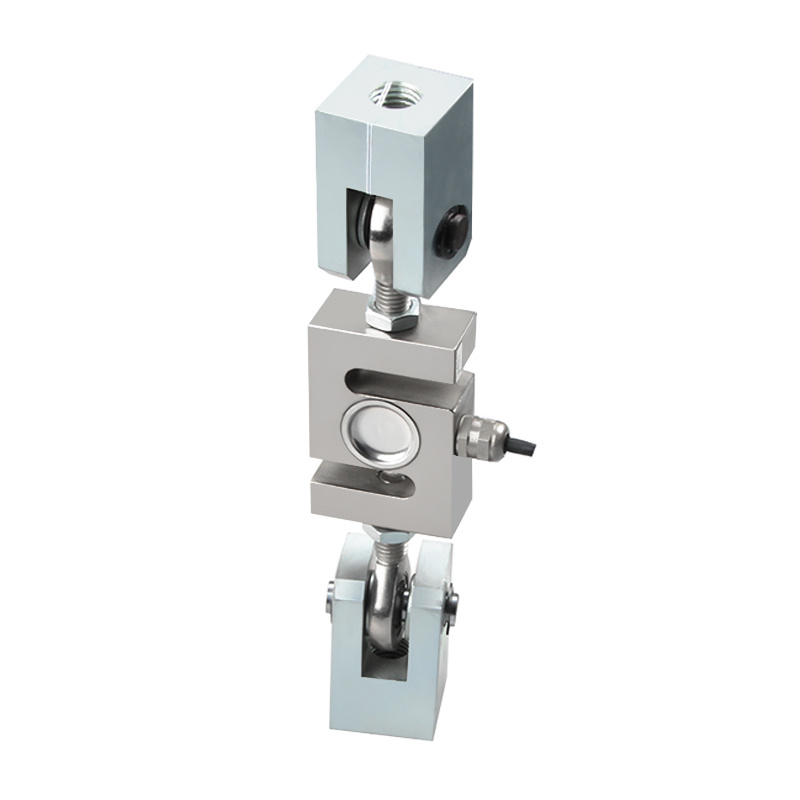S-type load cells are the most commonly used sensors for measuring tension and pressure between solids. Also known as tensile pressure sensors, they are named for their S-shaped design. This type of load cell is used in a wide range of applications, such as crane scales, batching scales, mechanical transformation scales, and other electronic force measurement and weighing systems.
The working principle of the S-type load cell is that the elastic body undergoes elastic deformation under the action of external force, causing the resistance strain gauge attached to its surface to deform. This deformation causes the resistance value of the strain gauge to change, which is then converted into an electrical signal (voltage or current) through the corresponding measurement circuit. This process effectively converts the external force into an electrical signal for measurement and analysis.
When installing an S-type load cell, several key factors should be considered. First, the appropriate sensor range must be selected and the rated load of the sensor must be determined based on the required working environment. In addition, the load cell must be handled carefully to avoid excessive output errors. Before installation, wiring should be performed according to the instructions provided.
It should also be noted that the sensor housing, protective cover, and lead connector are all sealed and cannot be opened at will. It is also not recommended to extend the cable by yourself. To ensure accuracy, the sensor cable should be kept away from strong current lines or places with pulse waves to reduce the impact of on-site interference sources on sensor signal output and improve accuracy.
In high-precision applications, it is recommended to preheat the sensor and instrument for 30 minutes before use. This helps ensure accurate and reliable measurements. By following these installation guidelines, S-type weighing sensors can be effectively integrated into a variety of weighing systems, including hopper weighing and silo weighing applications, to provide accurate and consistent measurements.
Post time: Jul-16-2024











